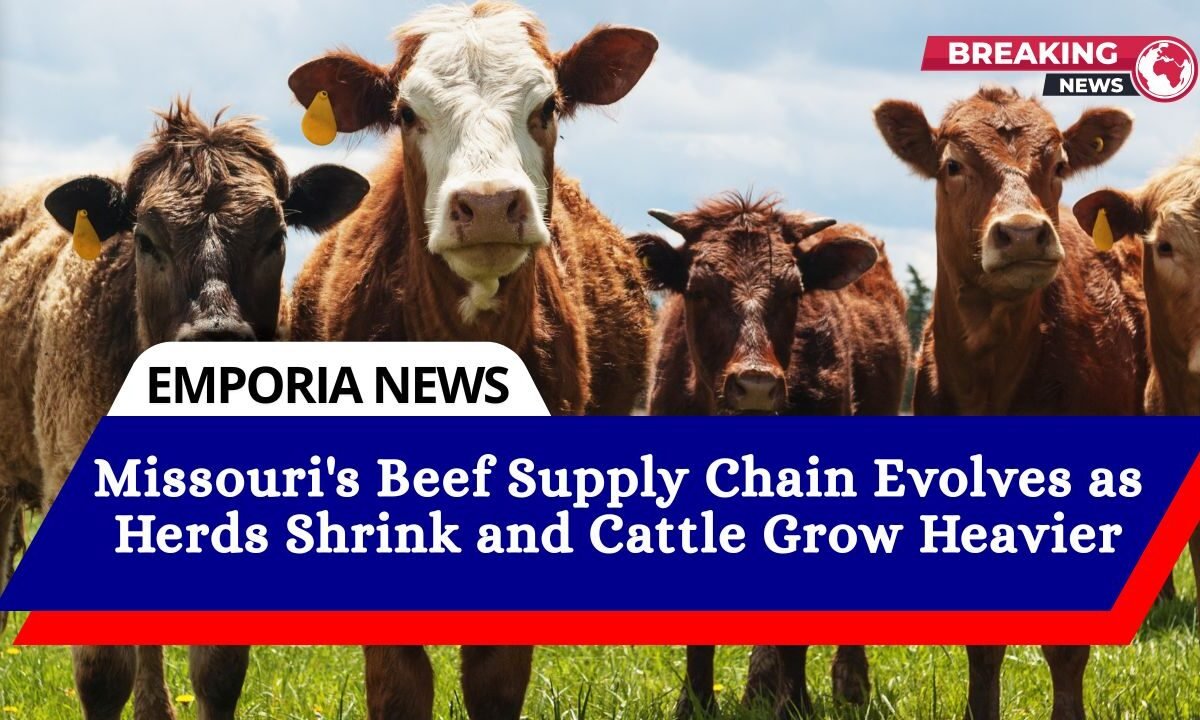Missouri’s cattle industry has undergone significant transformation over the past several decades. Gone are the days of “buckle cows,” named for their modest size that barely reached a rancher’s belt.
Today’s cattle are noticeably larger, not in height, but in weight, thanks to genetic advancements and industry-driven breeding strategies.
Genetics Shift Focus to Performance
During the 1950s, when herd sizes were diminished, breeders began selecting for larger frame sizes.
In more recent years, however, improved genetic technologies have allowed producers to focus on performance traits like weight gain, leading to heavier but not taller cattle.
The trend is partly in response to the historic low in U.S. cattle inventory, which reached a 73-year low in 2024 due to prolonged droughts.
Instead of simply breeding more cows, producers have opted to increase carcass weight to maintain beef supply levels.
Beef Industry Responds to Shrinking Herds
According to Don Close, a senior analyst at Terrain Ag, increasing individual cattle weight has become a strategic move to offset declining headcounts.
He estimates the average live weight of cattle grows by 8 pounds annually, with carcass weight — the usable meat — increasing by about 5 pounds each year.
The trend has been driven further by meatpacking plants, which encourage higher weights through incentives.
The hot carcass weight discount penalizes producers if weights exceed the facility’s limit, so farmers push cattle as close to that threshold as possible.
Weight Limits Continue to Climb
Jamie Courter, State Beef Genetics Specialist at University of Missouri Extension, explained that when she entered the field a decade ago, the weight limit for carcasses was around 1,000 pounds.
That limit has steadily risen — to 1,050 pounds, then 1,100, and now even 1,200 pounds at some advanced plants.
Courter emphasized the financial impact of these incentives: “Commercial cattlemen will always follow the money because it directly affects their bottom line.”
Larger Cuts Present Packaging Challenges
The increase in cattle weight is being felt beyond the farm. Cuts like ribeye and loin are becoming too large to fit standard packaging, leading to changes in slicing methods.
However, Don Close argues that higher weights help consumers by keeping beef more available and preventing price spikes during supply constraints.
Weighing Cost Against Sustainability
While larger cattle often produce better marbling and higher quality grades — with over 80% of beef now rated Choice or Prime — experts warn the trend may not be sustainable.
“A 2,000-pound cow eats more, which requires more acreage or feed to support,” said Courter. Farmers must balance weight gains with the cost of land, hay, and grain, or reduce herd sizes to compensate.
Focus Shifts to Feed Efficiency
As maintenance costs rise, breeders like Doug Frank of Frank/Hazelrigg Cattle Co. are looking beyond weight.
The focus is shifting to traits like feeding efficiency, particularly Relative Feed Intake (RFI) — measuring how effectively cattle convert feed into weight.
“Maybe we’ve hit the ceiling for efficiency with weight,” Frank said. “Now we’re paying closer attention to traits that help us maximize gains with fewer resources.”
Despite a declining national herd, the U.S. beef industry continues to thrive through innovation and efficiency.
Missouri’s cattle producers are raising heavier animals, fine-tuning genetics, and redefining what sustainable beef production looks like in the face of droughts, rising costs, and shifting consumer demands.




